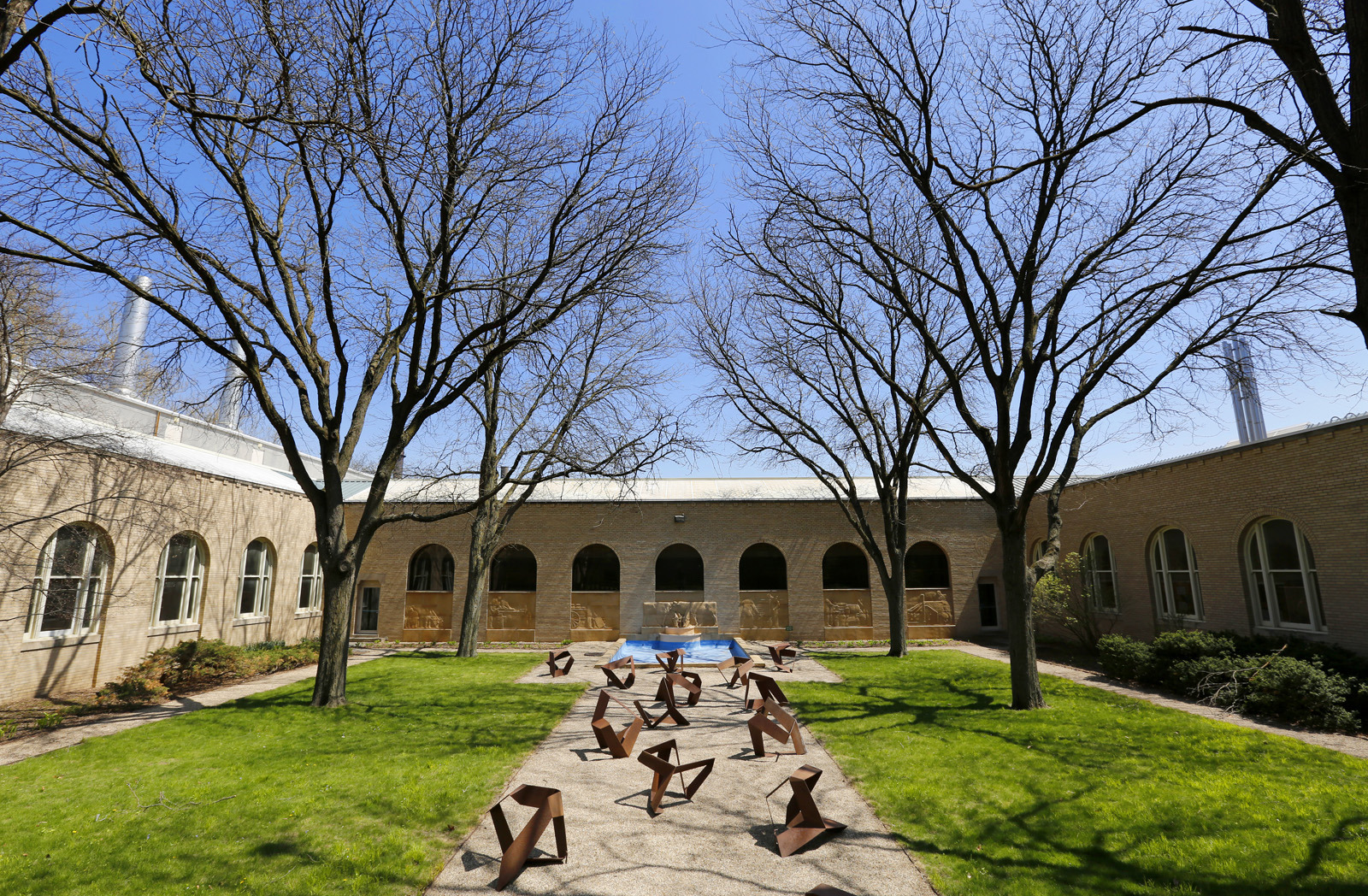Lake LaVerne's image problem
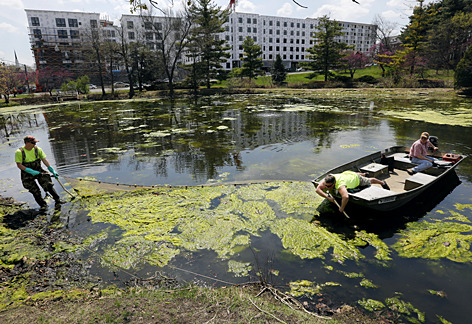
Campus services staff used a boat, nets and rakes to remove algae from Lake LaVerne on Friday. Photo by Christopher Gannon.
It's small, it's still and it's shallow. And right now, that recipe makes Lake LaVerne look gross.
Research project
A group of ISU faculty and students earned grant funds to launch "floating islands" water quality research in Lake LaVerne.
A 2.8-acre pond constructed in 1916, the lake has turned green with an algae bloom. Chris Strawhacker, landscape architect in facilities planning and management, said the filamentous algae showed up earlier this year, thanks to warm and dry spring weather.
"We noticed the algae earlier this year, just as the ice was going out at the end of March," Strawhacker said. "That's about four to six weeks earlier than normal."
The nutrients that feed the algae come from sources like animal waste and the decaying algae itself. The shallow depths of the lake -- only about six feet at its deepest -- allow the sunlight to penetrate and warm the calm waters for quick and plentiful algae growth.
Although it's not a threat to the lake and its wildlife, the algae is unsightly. FPM has taken steps to sustainably manage its growth by:
- Eliminating fertilizer use on surrounding grass and runoff areas
- Applying aluminate sulfate (alum) that binds to the phosphorus and starves the algae
- Diluting the water with well water and rain water collected off Music Hall
- Aerating the water to increase oxygen levels
- Working with the ISU Limnology Lab to monitor water quality
- Managing wildlife, such as discouraging nesting geese
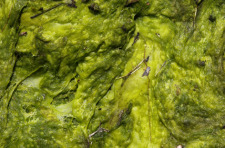
Filamentous algae, up close. Photo by Christopher Gannon.
FP&M crews and student volunteers have used nets and rakes to pull algae from the lake surface this spring. Strawhacker said the alum treatment timeline was moved up because of the early algae bloom, and results should be visible soon.
"With some help from the weather, it should begin to look better as students end the spring semester and graduate," Strawhacker said.
Lake LaVerne's appearance is not uncommon in the Midwest, but the visibility of the popular campus landmark gets people talking about it. FPM's move toward more environmentally friendly management methods have improved the lake's health, but long-term solutions -- such as increased water depths -- are costly.
"We're exploring other ways that we can manage the lake -- from increasing the amount of water flowing into the lake, to removing the nutrient rich sediment and reshaping the bottom for deeper water," Strawhacker said.
Ten faculty receive special recognition
Ten Iowa State faculty members received special awards for the 2015-16 academic year. Three faculty each have been named Distinguished and University Professor, and four have been named Morrill Professor. They, along with other university and regent award recipients, will be honored Sept. 21 at the annual faculty and staff awards ceremony.
Distinguished Professor
The Distinguished Professorship recognizes exemplary performance in research or creative activities as reflected by a national or international reputation in the faculty member's discipline. Recipients receive a $6,500 increase to their base salaries and retain the title for the remainder of their Iowa State careers.
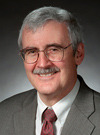
Howell
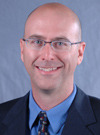
Nettleton

Shanks
Charles F. Curtiss Distinguished Professor in Agriculture and Life Sciences
- Stephen Howell, professor of genetics, development and cell biology
Distinguished Professor in Liberal Arts and Sciences
- Daniel Nettleton, Laurence H. Baker Chair in Biological Statistics and professor of statistics
Anson Marston Distinguished Professor in Engineering
- Brent Shanks, Mike and Jean Steffenson Professor of chemical and biological engineering
University Professor
The University Professorship recognizes faculty members whose professional work has resulted in positive, significant institutional change, beyond a one-time impact. Recipients receive a $6,000 increase to their base salaries and retain the title for the remainder of their Iowa State careers.
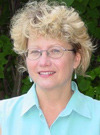
Dobbs
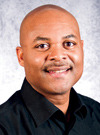
Rollins
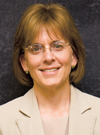
Rover
- Drena Dobbs, professor of genetics, development and cell biology
- Derrick Rollins, professor of chemical and biological engineering and of statistics
- Diane Rover, professor of electrical and computer engineering
Morrill Professor
The Morrill Professorship recognizes faculty members with outstanding success in teaching and learning in undergraduate, graduate or extension/outreach programs. They join Iowa State's Morrill Academy for Teaching and Learning, where they will share their expertise with other faculty. Recipients receive a $6,000 increase to their base salaries and retain the title for the remainder of their Iowa State careers.
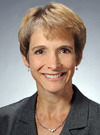
Constant
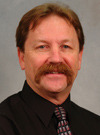
Noxon

Ogilvie
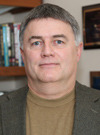
Shrader
- Kristen Constant, Wilkinson Professor in Interdisciplinary Engineering and chair, materials science and engineering
- James Noxon, professor of veterinary clinical services
- Craig Ogilvie, professor of physics and astronomy
- Brad Shrader, University Professor of management
Veenker's middle bridge is replaced
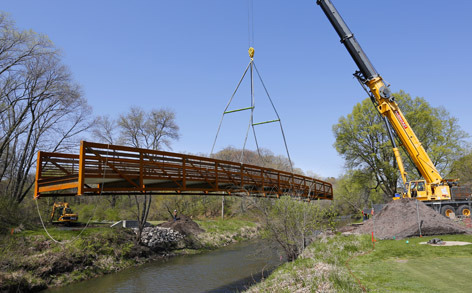
A crew from Peterson Contractors, Reinbeck; and Barnhart Cranes, Ames, moves the 120-foot steel bridge over Squaw Creek at Veenker Memorial Golf Course. Photo by Christopher Gannon.
About five months in the making, crews placed a 120-foot, self-weathering steel bridge across Squaw Creek on the Veenker golf course April 23. The new bridge, wide enough for maintenance trucks or for two golf carts to meet, replaces a steel cable suspension bridge that was original to the course (1938). One of the cables failed the first week in November and university crews removed the bridge within weeks.
The new bridge is the middle of three pedestrian bridges that span the creek on the golf course. With golfers from four holes using it, it's also the busiest. To keep the course operational with minimal river crossings, Veenker managers altered the hole playing sequence and installed a temporary No. 16 green on the east side of Squaw Creek.
Fabricated in suburban Minneapolis, the bridge was transported to Ames in two pieces on semitrailers. The two sections were bolted together and lifted into place as a single piece. The bridge was installed at a slight downward tilt to the north so that future floodwaters will flow more easily over its surface. A concrete bridge deck is scheduled to be poured on the galvanized metal forms yet this week, with concrete bridge approaches to follow. Clubhouse manager Tess Balsley said the goal is to have golfers using the new bridge the second or third week in May.
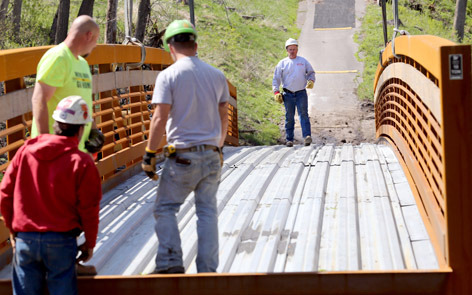
Installation angle shows bridge deck before concrete surface is added. Photo by Christopher Gannon.
Emerging Leaders class announced
Thirty-two faculty and staff have been chosen to participate in the next cohort of Iowa State's Emerging Leaders Academy (ELA).
ELA is an academic-year initiative to develop faculty and P&S staff currently serving in leadership roles at Iowa State, or who aspire to hold leadership positions. Beginning in August, participants attend monthly sessions on leadership theory and practice, current issues in higher education, and university-related challenges and opportunities. Through the year, each participant also will participate in a mentoring relationship with a current Iowa State leader.
The 2015-16 cohort members are:
- Chelsey Aisenbrey, senior vice president and provost office
- Jordan Bates, internal audit
- Anne Bronikowski, ecology, evolution and organismal biology
- Katherine Bruna, School of Education
- David Cantor, supply chain and information systems
- Cinzia Cervato, geological and atmospheric sciences and senior vice president and provost office
- Susie Eaton, information technology services and vice president for research office
- Warren Franke, kinesiology
- Kelly Friesleben, admissions
- Jeremy Hanson, information technology services
- Jack Hartwigsen, intellectual property and technology transfer office
- Volker Hegelheimer, English
- Monica Howard, Veterinary Medicine administration
- Nick Jeffery, veterinary clinical sciences
- Kyla Kaetzel, university human resources
- Amy Kruzich, ISU Foundation
- Rachele Kugel, Liberal Arts and Sciences administration
- Monica Lamm, chemical and biological engineering
- Jennifer Leptien, learning communities
- Sara Marcketti, apparel, events and hospitality management
- Chris Martin, integrated studio arts
- George Micalone, Memorial Union
- Shannon Miner, Engineering student services
- Soma Mitra, Business administration
- Michelle Rasmussen, Design administration
- Kevin Schalinske, food science and human nutrition
- Mallory Schon, Ames Laboratory
- Hilary Seo, library
- Igor Slowing, Ames Laboratory
- Alex Tuckness, political science
- David Wong, veterinary clinical sciences
- Zhengyuan Zhu, statistics
John Schuh, Distinguished Professor Emeritus of educational leadership and policy studies, will continue to lead the program. Schuh was one of the leaders of an earlier leadership development program called Shared Leadership for Institutional Change.
"ELA graduates represent the next generation of university leaders," Schuh said. "They will help sustain Iowa State as a premier land grant institution, address challenges in higher education and propel the university to even greater achievements in the future."
The provost's office established the ELA program in 2009 to help prepare a broader and more diverse group of faculty and staff for leadership roles across campus. The 2015-16 ELA class will be the program's fifth cohort.
Regents begin salary discussion, approve faculty P&T awards
The state Board of Regents approved 70 Iowa State faculty promotion or tenure awards for the 2015-16 year during its April 23 meeting at the Iowa School for the Deaf, Council Bluffs. The full list is posted on the provost's website. The awards take effect July 1 for A-base (12-month appointment) faculty and Aug. 16 for B-base (nine-month) faculty.
ISU faculty promotions for 2015-16
|
College |
Promotion with tenure |
Promotion (previously tenured) |
Promotion w/out tenure |
Tenure w/out promotion |
Total |
|
AGLS |
8 |
3 |
3 |
|
14 |
|
Business |
3 |
1 |
|
1 |
5 |
|
Design |
2 |
2 |
|
|
4 |
|
Engineering |
|
6 |
|
|
6 |
|
HS |
7 |
2 |
|
|
9 |
|
LAS |
15 |
9 |
|
|
24 |
|
Library |
|
1 |
|
|
1 |
|
Vet Med |
4 |
3 |
|
|
7 |
|
Total |
39 |
27 |
3 |
1 |
70 |
Input on salary increases
Representatives of non-unionized employee groups were given a few minutes to present key ideas on salary adjustments for the fiscal year that begins July 1. Professional and Scientific Council president Amy Tehan and Faculty Senate president Kevin Schalinske represented Iowa State.
Schalinske noted that faculty salary increases the last few years, while a positive trend, have not kept pace with cost-of-living increases.
He also talked about salary compression, caused by high starting salaries for the new faculty hires demanded by Iowa State's enrollment growth.
"Loyal faculty who have been at Iowa State for a number of years fall behind with respect to the compensation that is required to hire new faculty members," Schalinske said. "While increasing faculty numbers is important and the quality of new faculty needs to be high, salary compression does damage morale for those it impacts."
Another strategy for handling the growth is retaining excellent faculty already at Iowa State. Low faculty compensation "severely undermines" retention efforts, he said.
Tehan told the board that professional staff receive additional responsibilities due to initiatives to hire additional faculty, recruit more students and bring in more external funding.
"Added pressures and increased workloads have become the standard experience for P&S staff throughout our university," which has negatively impacted morale, she said. She also said the most recent ISU salary competitiveness report, which targets specific job categories, found that Iowa State salaries, on average, were about 15 percent lower than the local market – and as much as 29 percent below market in specific categories.
Iowa State has a national reputation for "doing higher education right," Tehan said, but that means "we must attract and retain highly productive and motivated individuals at all levels."
Two fixes, she said, are staffing increases, which are at the discretion of the local unit, and salary increases, which the board can influence.
Board president Bruce Rastetter expressed an understanding of the additional stress faculty and staff may feel as a result of such changes as the board-led efficiency review, implementation of a new state funding model and enrollment growth at Iowa State.
"We appreciate you being invested in the greater good of the universities," he said. "We're committed to better outcomes."
Regarding the TIER review specifically, he reminded employees that savings realized through efficiency will be reinvested in the universities.
The board is scheduled to discuss FY16 salary increases at its June 4 meeting.
Bond sale
The board approved the sale of $30 million of dormitory revenue bonds, at the low-bid interest rate of 3.09 percent. Revenue from the sale will partially cover the costs of constructing a residence hall east of Buchanan Hall and renovating the Friley Hall dining center. This is the first of two scheduled bond sales for the projects.
On April 20, in anticipation of the sale, Moody's Investors Service assigned an Aa2 rating (third highest in a 21-point ranking) to the proposed sale. The reasons behind the strong rating include enrollment growth, strong revenue growth in the residence department, high occupancy rates (more than 100 percent for the last three years), strong ISU cash flow, conservative budgeting and contingency planning.
TIER update
Regent Larry McKibben, who co-chairs the regents' Transparent Inclusive Efficiency Review (TIER) committee, said the managing group is pleased with progress in the last six weeks. Based on comments by three current consultants – Chazey Partners, Pappas Consulting Group and Ad Astra -- McKibben told board members, "I can tell you all that Iowa is a leader in the nation in undertaking these efficiency initiatives, in terms of a comprehensive efficiency and transformation review across all three universities. Nobody in the nation has taken an effort, at this level, that we have in the state of Iowa. And it will pay dividends."
Mark Braun, who since August served as the TIER project manager and is returning this month to the University of Iowa as vice president for operational efficiency and organizational analysis, provided an update on five business cases for which implementation doesn't require a consultant's assistance:
- IT03 (create a CIO Council and application inventory): The council's principles and process are developed. Since November, Braun and the three chief information officers have had weekly teleconferences to begin the coordination.
- HR10 (establish a policy for P&S search committee size and structure): Each campus will fully implement its plan this summer.
- SS05 (create a common student online application portal): The universities will begin beta testing in May; board members will receive a demonstration of the portal at their June meeting.
- FAC03 (limit building use to reduce operation costs), FAC04 (invest in initiatives that reduce energy use): The regents' facilities committee will receive an update on these two cases, also at the June meeting.
ISU associate vice president Miles Lackey, who serves as the regents' contact person with the Pappas group, provided an update on the two academic business cases, which focus on distance learning (APSS01) and enrollment management in order to improve time to degree (APOE06). Pappas is the consultant hired to work on the academic-related proposals. Lackey reorted that the Pappas team:
- Since early March, requested and reviewed "a great deal of information" related to each business case
- Visited earlier this month with staff in the board office and at each university involved in functions related to e-learning, enrollment management and student success
During the summer months, Lackey said the Pappas team "will analyze and review the information gleaned from the individual campuses," and incorporate classroom use/scheduling data developed for a separate business case by TIER consultant Ad Astra. Early in the fall semester, he said, the process will involve faculty and staff at the three campuses. Later in the semester, Pappas will present its final reports and recommendations to the board.
Parking permit rates
The board approved campus parking permit prices, including lots and the Memorial Union ramp. Effective July 1 in most cases, annual permits will go up $3 (motorcycle) to $12 (reserved, 24-hour reserved and MU annual rate).
Parking permit increases
|
Permit |
Current |
FY16 |
|
24-hour reserved |
$878 |
$890 |
|
Reserved |
$503 |
$515 |
|
General staff* |
$158 |
$164 |
|
Departmental |
$158 |
$164 |
|
Vendor |
$197 |
$203 |
|
Staff motorcycle |
$53 |
$56 |
|
MU ramp |
|
|
|
Employee |
$510 |
$522 |
|
Annual |
$510 |
$522 |
|
Semester |
$220 |
$226 |
|
Winter** |
$214 |
$220 |
|
Summer*** |
$177 |
$182 |
*Includes residence department and Ames Lab staff
**Valid November-February
***Effective May 9
Residence and dining rates
The board gave final approval to student housing and dining rates, effective May 11. Most residence hall and on-campus apartment rates will go up 3 percent, an increase of $112 to $216 for the year, depending on the building. The exceptions are a 2 percent increase ($93-$113) at University and Schilletter Village apartments, and 8 percent ($464-$586) for off-campus leased apartments. Student meal plans will go up approximately 3 to 3.5 percent, depending on the plan selected. The guest price in the three dining centers goes up 25 cents, to $9 for breakfast (Conversations in Oak/Elm halls remains a la carte) and $11 for lunch and dinner. Faculty and staff who use the employee charge plan on their ISU Card receive a 10 percent discount on the guest rate.
Terms end
The meeting was the last for long-serving regents Robert Downer and Ruth Harkin and student regent Hannah Walsh, a senior at the University of Iowa. Downer has served on the board since 2003, Harkin since 2005. Walsh has served since November 2012. Last month, Gov. Terry Branstad named Mary Andringa of Mitchellville and Patricia Cownie of Des Moines to fill the Downer and Harkin vacancies. He recommended Northern Iowa freshman Rachael Johnson, Sioux City, for the student seat on the board. All three spots require a two-thirds approval vote from the Iowa Senate.
Interim U of I president
The board approved the appointment of Dr. Jean Robillard, vice president for medical affairs at the University of Iowa, as the university's interim president beginning Aug. 1. In January, Sally Mason announced her intent to retire from the president's post this summer. Robillard also is chairing the search committee for Mason's successor.
Other items
In other Iowa State-related business:
- State auditor Mary Mosiman told board members that neither Iowa State nor the University of Iowa has approved a policy requiring the encryption of sensitive data on portable devices. This was first recommended to the regent universities in a FY12 state audit report, she said.
- The board approved naming the football stadium's south club section as the Sukup End Zone Club in honor of the Sukup family, Sheffield. The Sukups, owners of Sukup Manufacturing, made a multimillion dollar pledge to the athletics department, a portion of which was applied to the $53 million end zone project.
- The board approved a lease for three acres of southeast Hamilton County farmland for five years, beginning May 1, on which ISU will construct and operate a 400-foot meteorological tower as part of the multi-institutional Crop/Wind-energy Experiment (CWEX) research project.
Time to complete training on sexual assault, discrimination, harassment
In the past year and a half, many Iowa State faculty and staff have completed mandatory training on discrimination, harassment and Title IX. Completion rates, which vary among employee groups and training modules, range from 86 to 94 percent.
The numbers are very encouraging to Robin Kelley, director of the office of equal opportunity (OEO). However, the training goal is 100 percent, and Kelley is making a concerted push this spring to get there. In a recent email, she asked administrators and managers to help ensure that all employees under their supervision complete the training.
"Every faculty and staff member needs to know the laws, policies and procedures on discrimination, harassment and Title IX," Kelley said. "The customized training modules provide practical advice on how to handle typical situations that occur in office and university environments."
The courses, which use an interesting cast of office characters, students and administrators to make the points, are about 40 minutes each. A course doesn't have to be completed in one sitting. The course will pick up where left off.
Online training modules
There are three online training modules for faculty and staff. All employees must take two courses on:
- Unlawful harassment prevention
- Preventing discrimination and sexual violence. This course covers several federal laws -- Title IX, which prohibits sexual discrimination in education; the Violence Against Women Act, which strengthens penalties against offenders and provides service to victims, and the Clery Act, which requires universities to disclose information on campus crime.
Supervisors also are required to complete an additional module tailored toward supervisors on unlawful harassment prevention.
Training module completion rates
| Unlawful harassment prevention | |
| Staff | 94% |
|
Faculty |
86% |
|
Unlawful harassment prevention (supervisor supplement) |
|
| Staff | 89% |
|
Faculty |
86% |
|
Prevent discrimination, sexual violence, Title IX |
|
| Faculty/staff | 94% |
| Students | 75% |
Two-year training cycle
Kelley noted that employees will be required to update their knowledge base and skills by completing harassment and discrimination training every other year.
"Laws and policies change and faculty and staff need to remain sharp and knowledgeable," she said. "We want to create an environment that is safe, welcoming and inclusive."
The training cycle for employees begins anew with the 2015-16 academic year, Kelley said.
Student training
Students also are required to complete online training. Most students only need to take a single module during their Iowa State careers. The course focuses on sexual discrimination, sexual assault, harassment, domestic violence, dating violence and stalking. Some student workers, such as graduate students, are required to take a second course on preventing unlawful harassment.
How to complete online training
Those who haven't completed online training should do so as soon as possible, Kelley said. Here's how to get it done:
- Supervisors should find out who needs to complete training. OEO (eooffice@iastate.edu) can provide a list upon request.
- Employees who retained their original December 2013 OEO training emails can get into their personal training accounts from the emails (sent by the office of equal opportunity with the email address workplaceanswers.com). Otherwise, contact eooffice@iastate.edu for instructions.
- New employees who've never received training information need to contact eooffice@iastate.edu to receive an email with instructions. The emails will come from the office of equal opportunity with the email address workplaceanswers.com.
Eat your lunch alfresco on Friday
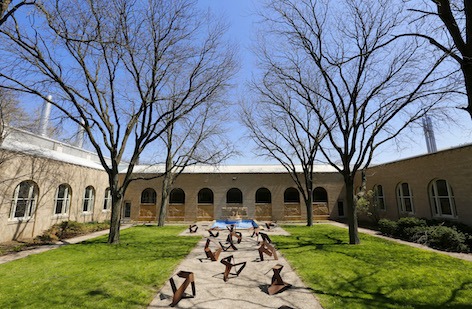
The Food Sciences Building courtyard. Photo by Christopher Gannon.
Bring your lunch and start your weekend respite tomorrow during University Museums' "Music in the Courtyard" (noon to 1 p.m., Food Sciences Building courtyard). Enjoy the melodic musings of Ken Jolls, Professor Emeritus of chemical and biological engineering, as he plays an electric piano among the sculptures in the Chuck Ginnever: Rashomon temporary exhibit. Some chairs will be provided; no rain date is planned.
Installed last November, Rashomon features 15 identical sculptures placed in 15 different positions. Earlier this spring, ISU statistics students began rotating the sculptures each week. University Museums is photographing the changes from the same vantage point weekly, and will piece the images together after the exhibition closes July 1.
